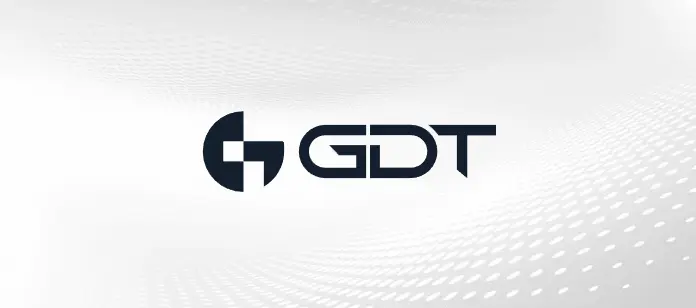I recently attended the HIMSS conference, and unsurprisingly, the primary topic of discussion centered on AI. The big question on everyone’s minds: What is agentic AI, and how is it being used in the healthcare industry? AI integration is becoming increasingly crucial in healthcare, particularly for automating workflows and enhancing patient interactions — and demand is growing rapidly. The market size for global agentic AI in healthcare in 2024 was around $538.5 million. By 2030, that number is expected to balloon to nearly $5 billion.i1
Here at GDT, we work with healthcare customers every day to harness the power of agentic AI. In this blog post, I dive into how healthcare customers are using agentic AI and some of the challenges organizations must address to successfully integrate agentic AI into their workflows.
What is agentic AI?
Unlike generative AI (GenAI), which relies on a prompt to output whatever is requested, agentic AI is proactive, meaning it can take initiative and act. It understands goals and objectives, makes decisions, and adapts to evolving situations. More than just automation, agentic AI enables intelligent collaboration.
The use of AI to autonomously perform tasks and make decisions has compelling applications in the healthcare industry, both from a patient care perspective and an operational efficiency perspective. A great example is self-service appointment management. Currently, it’s easy and commonplace to send an automated reminder text to a patient with an upcoming appointment. However, if the patient needs to change that appointment, they have to call the provider. On the other hand, by applying agentic AI, the patient can save themselves a phone call by leveraging a digital channel to reschedule their appointment. It’s easier and more convenient for the patient, and since every call costs time and money, it’s more cost-effective for the provider.
The ability to automate and have AI make decisions is vital, especially when it comes to higher-volume, lower-quality interactions like the aforementioned. In a contact center that sees high call volume, agentic AI can handle such interactions, freeing up agents to focus on lower-volume, high-quality interactions. This saves time and money and delivers a more friction-free experience for patients.
What are the use cases for agentic AI in healthcare?
Agentic AI drives immense business value for healthcare customers, from operational efficiencies and cost savings to improved patient safety to increased staff satisfaction. It all depends upon the application. It can be used to automate administrative tasks and support clinical decision-making. Below, I’ve compiled some of the most beneficial use cases for agentic AI.
Enhancing patient engagement
Self-service appointment management: Patients are being empowered with AI-driven self-service tools for scheduling, rescheduling, and canceling appointments. This convenience reduces call volumes and wait times while also increasing patient satisfaction.
Self-service prescription management: Similar to self-service appointment management, providers are empowering patients to manage their prescription refills and inquiries through AI-powered self-service portals, streamlining pharmacy communications.
Proactive patient outreach: In addition to automating reminders, providers are using agentic AI for follow-ups and educational content, enhancing engagement as well as adherence to care plans.
Improving patient communications
Omni-channel capabilities: Providers are enhancing patient communications by integrating AI across various communication channels such as chat, email, and phone, to provide consistent and seamless patient interactions, regardless of the platform.
Intelligent call steering: Additionally, providers are leveraging AI-powered natural language processing to direct patient calls to the most appropriate department or agent, thereby reducing transfer rates and wait times.
Natural language call processing: By analyzing and processing patient calls using natural language understanding, providers can extract key information and automate responses or documentation.
Supporting agent productivity
Real-time analytics and workforce management: Agentic AI provides agents and supervisors with real-time, AI-powered insights into performance and workloads, allowing them to optimize staffing and efficiency.
Agent burnout detection: AI also allows provider contact centers to monitor agent performance and sentiment to identify potential signs of burnout. This enables them to facilitate proactive support interventions.
What are some agentic AI challenges?
Like many emerging technologies, benefits also come with challenges. According to Gartner, around 40% of agentic AI solutions projects will be scrapped by the end of 2027 due to steep costs, hazy value, and subpar risk controls.
These same truths apply to the healthcare industry. Autonomy has its drawbacks, especially when monitoring and guardrails fall short. When left unchecked, hallucinations, malicious code, misinformation, and other issues pose a significant risk to organizations and patients. To help mitigate risks, organizations must implement robust cybersecurity and governance controls.
While AI agents can automate tasks like appointment scheduling and patient messaging, organizations often find themselves in a bind, whereby the agent has disrupted workflows. Then there’s the complexity of Epic integration. While Epic continues to expand its AI capabilities, integrating Epic into existing workflows is a complex process. And the reverse is also true. Then there’s the issue of orchestration.
Recently, a healthcare organization reached out to us because they had purchased an AI tool but were unable to integrate it with Epic. Fortunately, GDT had already overcome this problem with multiple customers. We were able to jump in with an Epic connector that we had previously built and make this tool work for them.
When it comes to business value, organizations sometimes struggle to prioritize effectively. They’ve compiled a list of agentic AI projects, but don’t know where to begin. After seeing the value of agentic AI at HIMSS, one of our customers had built a list of agentic AI use cases they wanted to tackle. But from a prioritization perspective, they hadn’t considered their infrastructure or workflows. We worked with them to build an in-depth roadmap that prioritized each project and tied it back to real metrics and business value.
There are countless ways to use agentic AI in healthcare, and we’re seeing an increasing number of projects pop up. GDT has strong capabilities in contact center operations and collaboration, helping numerous healthcare clients successfully adopt AI. If your organization is looking to explore AI, I’d encourage you to consider scheduling a no-obligation workshop. During this collaborative, half-day engagement, we will discuss your challenges and goals and build a high-level roadmap.
- Grand View Research (2025), Agentic AI In Healthcare Market (2025 – 2030), https://www.grandviewresearch.com/industry-analysis/agentic-ai-healthcare-market-report (date accessed: Sept. 26, 2025) ↩︎



